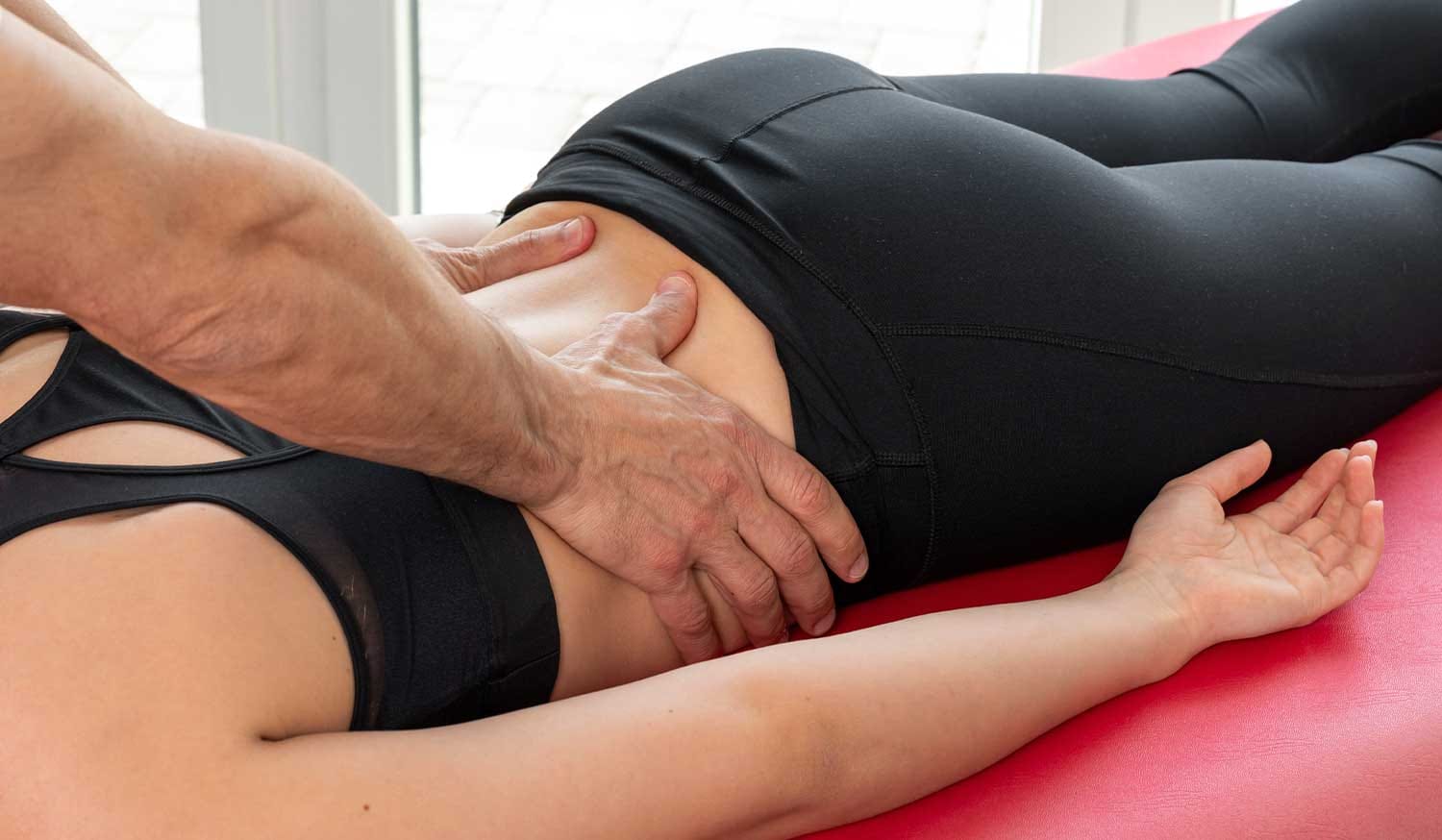Discover expert osteopathic techniques for pelvic girdle pain relief. MHV Clinic’s hands-on therapy and tailored exercises reduce lower back and pelvic discomfort, improving mobility. Learn how osteopathy supports pain-free living.

Pelvic girdle pain (PGP) is a debilitating condition that affects countless individuals, particularly during pregnancy or postpartum periods. At MHV Clinic, our osteopathic approach offers effective, evidence-informed solutions to alleviate discomfort and restore mobility. This blog explores advanced osteopathic techniques for pelvic girdle pain relief, detailing how osteopathy empowers patients to move pain-free and live fully. By combining hands-on manual therapy, targeted exercises, and lifestyle guidance, osteopaths at MHV Clinic address the root causes of PGP, ensuring long-term relief and improved quality of life.
Pelvic girdle pain refers to discomfort in the joints, muscles, and ligaments surrounding the lower back, hips, and pelvis. It often manifests as a dull ache, sharp twinges, or stiffness, particularly during activities like walking, climbing stairs, or turning in bed. PGP encompasses conditions such as symphysis pubis dysfunction (SPD) and is especially prevalent during pregnancy due to hormonal and biomechanical changes. However, it can affect anyone, including those with muscle imbalances, poor posture, or previous injuries.
According to the NHS, PGP affects up to one in five pregnant women, with symptoms ranging from mild to severe (NHS UK). While pregnancy-related PGP is standard, non-pregnancy-related cases also occur due to repetitive strain, trauma, or lifestyle factors. Osteopathy, a holistic and non-invasive therapy, is uniquely positioned to address these issues by focusing on the body’s structural alignment and function.
Understanding the causes of PGP is crucial for effective treatment. Several factors contribute to this condition:
By identifying these triggers, osteopaths can tailor treatments to address specific imbalances, offering relief that is both immediate and sustainable.
PGP symptoms vary widely but often include:
These symptoms can significantly impact quality of life, limiting mobility and affecting mental well-being. Osteopathy offers a comprehensive approach to managing these symptoms, focusing on restoring function and reducing pain.

Osteopathy is a patient-centred therapy that emphasises the body’s ability to heal itself when properly aligned. At MHV Clinic, our osteopaths use advanced techniques to provide pelvic girdle pain relief, ensuring compliance with UK advertising standards for health claims (ASA Guidelines). Here’s how osteopathy addresses PGP:
Manual therapy is the cornerstone of osteopathic treatment. Osteopaths use gentle, precise techniques to improve joint mobility and reduce tension in the muscles and ligaments. These may include:
These techniques are safe and effective for most patients, including pregnant and postpartum individuals, when performed by a qualified osteopath registered with the General Osteopathic Council (GOsC).
Exercise is vital for strengthening the muscles that support the pelvis. Osteopaths at MHV Clinic design individualised programs to:
For example, exercises like pelvic tilts or gentle bridges can stabilise the pelvis without exacerbating symptoms. Importantly, these programs are tailored to the patient’s condition, ensuring they are safe and effective.
Poor posture and ergonomics often contribute to PGP. Osteopaths provide practical advice on:
These adjustments empower patients to take control of their recovery and prevent flare-ups.
Education is a key component of osteopathic care. Osteopaths guide patients on safe movement techniques, pain management strategies, and lifestyle changes to support long-term health. For pregnant patients, this includes advice on preparing for labour and managing postpartum recovery.
Osteopathic care offers numerous benefits for individuals with PGP:
A 2018 study published in the Journal of Bodywork and Movement Therapies found that osteopathic manipulative treatment significantly reduced pain and improved function in patients with pregnancy-related PGP (ScienceDirect). This evidence underscores the efficacy of osteopathy for PGP relief.

Pregnancy-related PGP often arises in the second or third trimester due to hormonal changes and increased pelvic load. Symptoms may persist postpartum if not addressed. Osteopathy is particularly effective for:
For example, a pregnant patient experiencing symphysis pubis pain may benefit from gentle joint mobilisation and a pelvic support belt. In contrast, a postpartum patient might focus on core-strengthening exercises to regain stability.
At MHV Clinic, our osteopaths are highly trained and registered with the GOsC, ensuring professional and ethical care. We take a patient-first approach, offering:
Our clinic’s commitment to excellence is reflected in our comprehensive assessments, which identify the root causes of PGP and guide treatment. By combining manual therapy, exercise, and education, we empower patients to achieve lasting relief.
While professional osteopathic care is essential, patients can support their recovery with these tips:
For additional resources, the Pelvic Partnership, a UK-based charity, offers valuable advice on managing PGP (Pelvic Partnership).
Osteopathy stands out for its holistic and non-invasive approach. Unlike painkillers, which provide temporary relief, osteopathy addresses underlying structural issues. Compared to physiotherapy, osteopathy often places greater emphasis on manual techniques, though both can complement each other. Chiropractic care may focus more on spinal adjustments, while osteopathy takes a broader view of the body’s interconnected systems.
In the UK, osteopathy is a regulated profession under the Osteopaths Act 1993. Practitioners must be registered with the GOsC, ensuring they meet strict standards of training and conduct. At MHV Clinic, our osteopaths adhere to these standards, providing safe and effective care. The ASA guidelines ensure that health claims, such as those for PGP relief, are substantiated and not misleading, giving patients confidence in osteopathic treatment.
Pelvic girdle pain can significantly impact daily life, but osteopathy offers a powerful solution. At MHV Clinic, our advanced osteopathic techniques—combining manual therapy, targeted exercises, and lifestyle guidance—provide effective pelvic girdle pain relief. By addressing the root causes of discomfort, we empower patients to move pain-free and live fully, whether managing pregnancy-related PGP, postpartum recovery, or non-pregnancy-related pain.
For more information or to book a consultation, visit MHV Clinic. Take the first step towards pain-free living with osteopathy today.